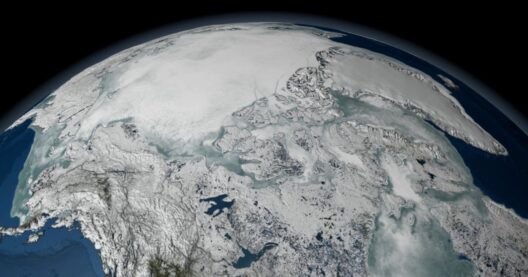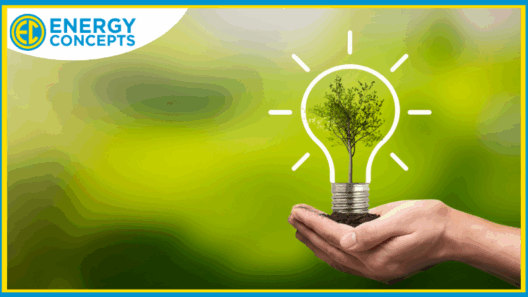Energy conservation, a fundamental concept often overshadowed by discussions of renewable energy sources, invites the inquisitive to ponder: what if we could achieve the same outcomes simply by using less? This question nudges us towards the idea that reducing energy consumption is not merely a necessity, but may present an opportunity for innovation and adaptation in our daily lives. As we dig deeper into understanding and explaining energy conservation, we will unveil its significance, mechanisms, and implications for the collective undertaking of climate change mitigation.
At its core, energy conservation refers to the practice of reducing energy use, which can be achieved through various methods ranging from technological advancements to behavioral changes. Unlike energy efficiency—which often involves optimizing processes to lessen energy requirements—conservation can be as simple as adjusting habits or practices to lower overall energy consumption. This nuanced distinction is essential to our understanding of how our actions can play an integral role in the broader narrative of sustainability.
Consider the profound implications of conserving energy. Each reduction in energy demand translates to less fossil fuel consumption, which directly diminishes greenhouse gas emissions. This is particularly critical in combating climate change, where increasing average global temperatures pose risks to ecosystems, biodiversity, and even human health. The challenges of ensuring a habitable planet for future generations certainly loom large. But how can we achieve this ambitious feat? By delving into the various strategies that comprise energy conservation, we might discover pathways that are as approachable as they are effective.
One of the quintessential strategies for energy conservation is behavior modification. Small lifestyle adjustments, such as turning off lights when leaving a room, maximizing natural light by opening curtains during daylight, or using energy-saving modes on appliances can collectively lead to significant savings in energy consumption. Remarkably, the potential impact of these changes is often underestimated. Education and public awareness campaigns can amplify this effect, fostering a culture valuing energy stewardship. Imagine if every household adopted such habits; the cumulative effect could rival that of much-lauded technological solutions.
Yet, behavior modification is but one piece of a multifaceted puzzle. The implementation of energy-efficient technologies—like LED lighting, energy Star appliances, and smart thermostats—represents a liberating marriage of innovation and conservation. By investing in these technologies, individuals and organizations can experience immediate benefits, such as lower utility bills, while also contributing positively to environmental objectives. The challenge, however, often lies in the initial costs associated with upgrading or replacing outdated systems. What if financial incentives existed to install such technologies, thus catalyzing both individual advancement and collective sustainability? This hypothetical scenario opens the floor to debates surrounding policy implementation and governmental responsibility.
Beyond behavior and technology, one cannot overlook the role of renewable energy sources in facilitating energy conservation. Renewable energies, such as solar and wind, allow for a dual-pronged approach: reducing our reliance on polluting fossil fuels while simultaneously driving home the principles of conservation by generating energy in increasingly efficient ways. Transitioning to these greener energies also raises ethical discussions about resource allocation, equity, and access to clean energy infrastructures that deserve scrutiny. The question arises—how can we engender a just transition where no community is left behind as we shift toward a more sustainable future?
Energy conservation also finds meaningful application in urban planning and infrastructure development. Cities are increasingly designing spaces that prioritize energy-efficient layouts, such as mixed-use developments, walkability, and public transport access. These practices aim to minimize the energy footprint of individuals and communities. However, we must confront the dichotomy between sprawling urban developments and compact, efficient designs. This presents a challenge for city planners—how can we balance the needs of growth with the imperatives of sustainability?
Equally pertinent is the role of education in promoting energy conservation. Schools and institutions that integrate environmental stewardship into their curricula cultivate a new generation of environmentally literate citizens. This fosters a mindset not just of acceptance but one of active participation in energy conservation. The playful question here is: what if every student completed a project on energy conservation? Would this not create a ripple effect, whereby knowledge begets action, and action inspires others to join the movement?
In discussions about energy conservation, it is crucial to acknowledge the global context. Energy consumption patterns vary widely around the world, reflecting differences in economic development, technological accessibility, and cultural attitudes toward energy use. For instance, developing nations may grapple with energy scarcity, while developed countries contend with overconsumption. This disparity prompts a critical dilemma—how do we address global inequities in energy access while promoting sustainable practices? Encouraging international collaboration is essential, as sharing best practices and resources can enable a more equitable approach to energy conservation.
As we navigate the complexities of energy conservation, it becomes evident that nothing exists in a vacuum. Behavioral change, technological advances, policy initiatives, and global cooperation all intertwine to create an intricate tapestry of possibilities. These elements coalesce into a challenge that extends beyond individual actions—it speaks to a systemic transformation that must occur if we are to combat climate change effectively. The potential is vast, yet our success hinges on our collective commitment to rethink our approach to energy use.
Ultimately, energy conservation is not merely a checkbox on a sustainability agenda; it is a concerted effort to understand our relationship with energy. Embracing this ethos can yield not only ecological benefits but also economic and social dividends. Engaging with this topic prompts commitment and requires audacity, but it ultimately gifts us the agency to shape a sustainable future. In the journey towards climate resilience, understanding and explaining energy conservation emerges as a cornerstone, equipping us to answer the looming question: how can we best honor our planet and its resources for generations to come?






